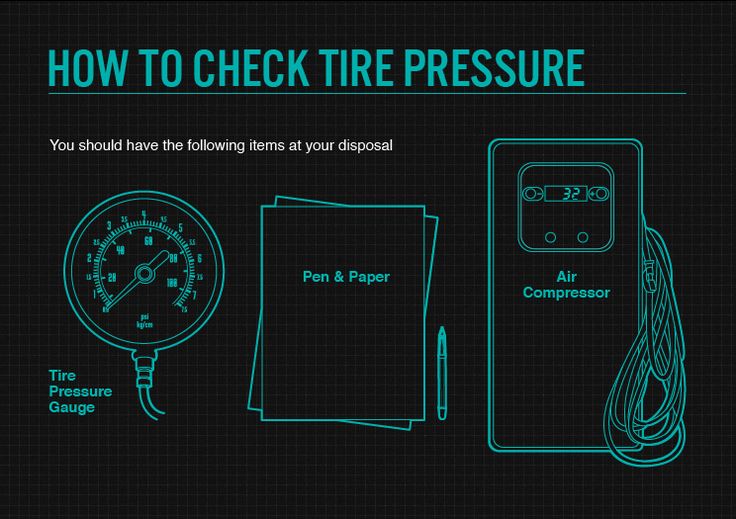Maintaining proper tire inflation is relatively simple and essential to the overall tire performance of your vehicle. A properly inflated tire will provide longer life, quicker steering response, better fuel efficiency and a smoother ride than an improperly inflated tire. Both underinflation and overinflation can cause headaches like premature treadwear and possible tire failure. The best way to ensure you're getting the most out of your tires is to check your tire pressure on a monthly basis.
Knowing how to use a tire pressure gauge is very simple. Here’s how to check tire pressure and refill your tires.
Items You Need When Checking Tire Pressure
Tire pressure gauge
Air compressor
Pen and paper
Your tire pressure gauge can be digital or standard. Auto parts stores typically carry both. Many auto parts stores sell portable air compressors that run from your car battery or 12v power port. Alternatively, you can use the air compressor found at most gas stations. They usually cost $0.50 or $1.00 to use.
Vehicle manufacturers specify PSI – literally “pounds per square inch” of pressure – assuming tires are cold. Tires are considered cold when the vehicle has been parked for three hours or more, or if the vehicle has been driven less than a mile (1.6 km) at moderate speed. PSI is the unit your pressure gauge uses to provide readings.
Look on the driver’s side door jamb or your owner’s manual to find the recommended cold tire PSI for your front and rear tires. If you cannot find it, you should consult your vehicle dealer, manufacturer, or a qualified tire professional.
If your front and rear tires require different pressure levels, write down the correct PSI for each to avoid getting confused as you move around your vehicle checking tire pressure.
Remove the valve cap from one of your tires. Then place the pressure gauge on the valve stem and press down hard enough so the hiss sound disappears and your gauge provides a reading. With a standard gauge, the air pressure will push a small bar out from the bottom of the gauge. Measurement units are etched into the bar. A digital gauge will show you the reading on a screen.
Write down the reading and repeat this process for all four tires.
Use an air compressor to refill any tires with low pressure. Many air compressors are different, so read directions carefully to be sure you’re using it correctly.
If you’re using the air compressor at a gas station, be sure to park so that the hose will reach all four tires. Insert change into the machine until you hear the motor running. Fill each tire by placing the end of the hose over the valve stem and pressing on the lever.
Using a gas station air compressor means your tires might be “hot. ” If it is necessary to adjust inflation pressure when tires are “hot”, set their pressure to 4 psi (14 kPa) above the recommended cold inflation pressure. Recheck the inflation pressure when the tires are cold.
” If it is necessary to adjust inflation pressure when tires are “hot”, set their pressure to 4 psi (14 kPa) above the recommended cold inflation pressure. Recheck the inflation pressure when the tires are cold.
After filling your tires, use the gauge to check pressure again. At this point, it’s ok if you overfilled the tires because you can always let some air back out. Never drive on overinflated tires. Overinflation can result in decreased traction, premature wear, and decreased impact absorption.
Make the above procedure a monthly ritual. Regularly checking your tire pressure is the best way to ensure your tires never dip far below the optimal PSI.
Accuracy matters and you should keep that in mind when choosing a gauge. For just a few dollars, you can find a quality, accurate tire pressure gauge that gives accurate readings. If you’re not sure which one to purchase, ask a professional technician which he or she prefers.
A digital tire pressure gauge will provide accurate readings, but don’t forget that it operates on a battery. If you think having to replace the battery will prevent you from using it, it’s best to go with a standard gauge.
It’s best to use your personal tire gauge versus those available attached to air hoses at service stations. Of all the pressure gauges out there, they’re the most likely to be weathered, and possibly inaccurate.
There’s never a good time for a flat. That’s why Bridgestone DriveGuard tires are masterfully engineered to keep you moving for up to 50 miles at speeds up to 50 MPH without disruption.
There’s never a good time for a flat. That’s why Bridgestone DriveGuard tires are masterfully engineered to keep you moving for up to 50 miles at speeds up to 50 MPH without disruption.
See Details Find Your Fit
 Make it a part of your monthly maintenance routine in a matter of minutes.
Make it a part of your monthly maintenance routine in a matter of minutes.Every editorial product is independently selected, though we may be compensated or receive an affiliate commission if you buy something through our links. Ratings and prices are accurate and items are in stock as of time of publication.
1 / 7
Driving on improperly-inflated tires can wear out the tread and cause steering problems. That’s why it’s important to check your tire pressure regularly.
Fortunately, checking tire pressure only requires two tools — a tire pressure gauge and an air compressor. Most gas stations have an air compressor so you only need to own one tool. The whole process is relatively quick, too. In a matter of minutes you’ve done a lot to ensure a safe and smooth ride.
Before you begin, make sure the car has been parked for three to four hours so you get an accurate reading from the gauge. If you drive to a gas station to use an air compressor, try to find one less than a mile away.
2 / 7
Veronica Graham
3 / 7
Veronica Graham
The driver’s side door jamb typically has a sticker with the recommended PSI (pounds per square inch) for the tires. Most manufacturers recommend 30 to 32 PSI for all four tires, although some cars will have different PSI recommendations for the front tires and back tires. If you don’t see the recommended PSI on your door jamb, check your owner’s manual.
If you don’t see the recommended PSI on your door jamb, check your owner’s manual.
4 / 7
Veronica Graham
Unscrew the cap on the tire air valve and place it somewhere safe.
5 / 7
Veronica Graham
Press the gauge onto the tire air valve straight on, and press it hard. This creates a tight seal around the tire air valve so you don’t accidentally release air from the tire. You’ll hear a hissing sound if air is coming out. A small bar with numbered notches will pop out of the pencil gauge with the tire pressure reading.
6 / 7
Veronica Graham
Fill up the tire by pressing the air compressor nozzle onto the tire air valve in the same manner as the gauge — hard and straight-on to create a tight seal. Hold the nozzle onto the tire air valve for about 30 seconds to one minute, depending on how low the initial reading is. Repeat Step Three to get the new reading. Add or release air as needed to reach the recommended PSI.
Hold the nozzle onto the tire air valve for about 30 seconds to one minute, depending on how low the initial reading is. Repeat Step Three to get the new reading. Add or release air as needed to reach the recommended PSI.
7 / 7
Veronica Graham
Repeat Steps Three and Four on the three remaining tires.
Originally Published: April 16, 2020
Veronica Graham
Veronica Graham is a freelance writer in Arlington, Mass. Her work has appeared in The Washington Post and SheKnows. She's covered health, politics, high school football and everything in between. Graham enjoys learning about the world through a variety of lenses as a reporter.
1. Tire and tire pressure recommendations
2. Pressure unit correspondence table
Pressure unit correspondence table
3. Why are deviations in tire pressure dangerous?
- Risks of insufficient tire pressure nine0005
- Risks of high tire pressure
4. How does tire pressure affect driving comfort and safety?
- Strengthening due to pressure
- Tire pressure for driving on the highway
nine0002 - Off-road pressure- Pressure and fuel economy
5. How does tire pressure depend on the season?
- Winter tire pressure
- Tire pressure in summer
nine0002 6. How to check tire pressure?7. How often should blood pressure be measured?
Headed out on the road? Check tire pressure. Permanent advice, which, alas, is often forgotten. In the meantime, properly inflated tires make driving comfortable, driving safer, and tire life longer. What should be the pressure? What are the dangers of over-inflated or under-inflated tires? We have collected answers to all questions, as well as useful tips, in one article. Everything written below will help you not only make your trip safe, but also save your budget. How? Read and level up. nine0005
Permanent advice, which, alas, is often forgotten. In the meantime, properly inflated tires make driving comfortable, driving safer, and tire life longer. What should be the pressure? What are the dangers of over-inflated or under-inflated tires? We have collected answers to all questions, as well as useful tips, in one article. Everything written below will help you not only make your trip safe, but also save your budget. How? Read and level up. nine0005
What should be the pressure?
Recommendations of car and tire manufacturers
So, let's start with the banal. Each car manufacturer has standards and recommendations for the level of inflation pressure in tires. It's always best to stick with them. You can find the numbers you need:
* In the vehicle owner's manual
* On a special sticker inside the car (usually on the car door, B-pillar or gas cap) nine0005
* In the form of a QR code (relevant for the latest models, especially premium ones; the sticker with the code is located in the same places)
These cheat sheets contain all the information you need.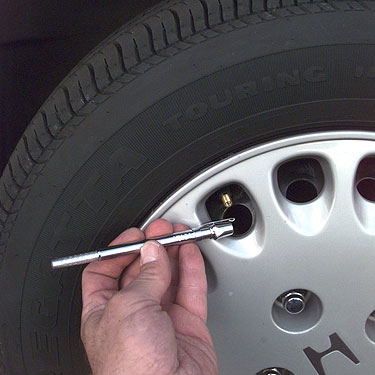 The manufacturer stipulates not only the optimal level of internal tire pressure, but also the limits to which it can be increased or decreased relative to the norm. The amount of pressure depends on the size of the tires, on some cars the recommended pressure for the rear and front wheels differs. To summarize, for most passenger cars, the recommended constant tire pressure ranges from 2-2.5 atmospheres. This is the norm not only for a comfortable and safe ride, but also for fuel economy. nine0005
The manufacturer stipulates not only the optimal level of internal tire pressure, but also the limits to which it can be increased or decreased relative to the norm. The amount of pressure depends on the size of the tires, on some cars the recommended pressure for the rear and front wheels differs. To summarize, for most passenger cars, the recommended constant tire pressure ranges from 2-2.5 atmospheres. This is the norm not only for a comfortable and safe ride, but also for fuel economy. nine0005
Tire manufacturers also indicate pressure on the label. But there is an important point here! The number on the sidewall of the tire is not the norm to strive for, but an indicator of the maximum pressure that the tire can withstand and not burst.
Correspondence table for pressure measurements
Tire pressure is measured in two units: atmospheres (or bars) and psi. Bars are the most common, it is in them that the pressure is measured in gauges in tire shops and gas stations. However, in some countries it is psi that is used - pounds per square inch. To avoid confusion, it is worth remembering that one psi corresponds to 0.068 bars. nine0005
However, in some countries it is psi that is used - pounds per square inch. To avoid confusion, it is worth remembering that one psi corresponds to 0.068 bars. nine0005
Why are deviations in tire pressure dangerous?
Tire pressure affects how long tires last and how quickly they wear out. And not only. If the tires are over-inflated or, conversely, under-inflated, then their critical properties such as traction, vehicle directional stability when driving, handling (especially when cornering and on uneven surfaces), braking distance and resistance to aquaplaning will change. nine0005
Why is this happening? To answer this question, elementary knowledge of physics is enough. With the right gas pressure from the inside to the tire, the tire retains exactly the shape that was intended by the manufacturer. The contact patch of the tire with the road is also optimal, because the tread at optimal pressure also retains its shape and the necessary degree of flatness so that its pattern moves along the surface as it should (see figure).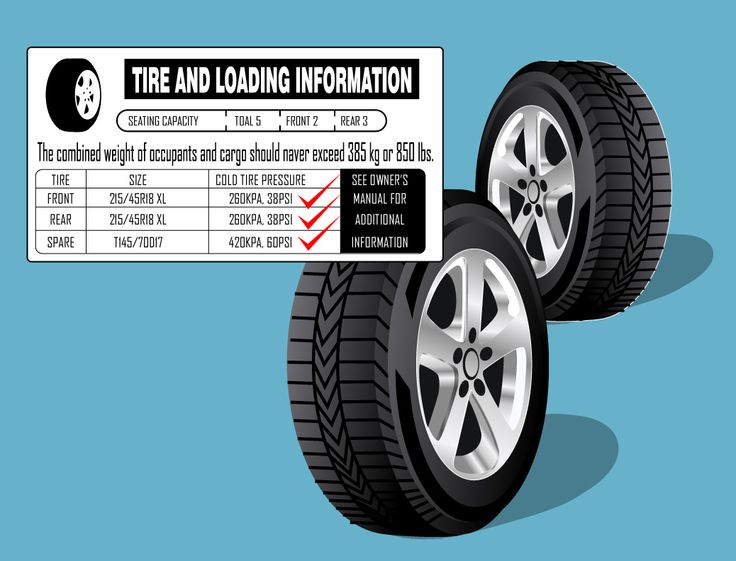
- Risks of insufficient tire pressure
Tires with low internal pressure or, in simple terms, under-inflated tires lose their shape when driving. They become softer, more pliable, and the weight of the car, especially at speed and when cornering, makes them literally sag and sag. What does it threaten?
Uneven wear. The side treads wear out faster than the middle tread because the tire has more contact with the road due to tire deformation. nine0005
The side treads wear out faster than the middle tread because the tire has more contact with the road due to tire deformation. nine0005
Rolling resistance increases, which causes the tire to heat up more.
Acceleration time is increased.
Increased fuel consumption.
Threatening the integrity of the tire carcass and its rubber, especially in the side parts, which can lead to sidewall rupture. This can be warned by a worn strip that appears around the entire circumference of the tire - this is evidence of chafing of the cord threads. nine0005
Risk of tire dismantling. An under-inflated tire may come off the disc seat.
Tires deformed by long-term use at low inflation pressure become unsuitable for further use. Even if the pressure in them is brought to normal, the risk of rupture in the weakened parts remains. If you want to avoid unnecessary expenses - do not strain the tires.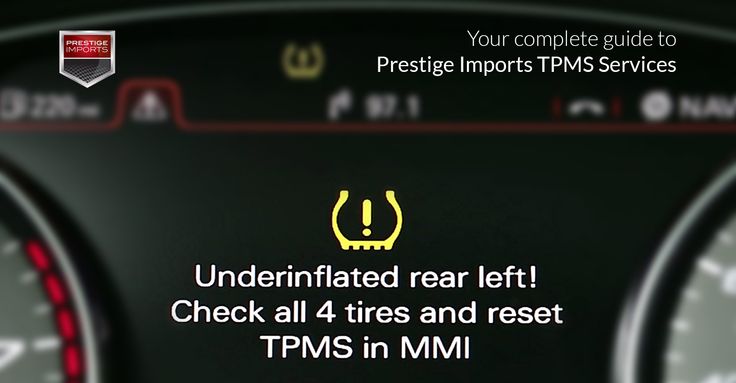
- Risks of high tire pressure nine0005
With increased tire pressure, the part of the tread that should be flat and provide reliable traction becomes convex, literally swells up like a ball. As a result, the contact patch of the tire with the road is much smaller than planned by the manufacturer. Why is it dangerous?
The tread wears unevenly, faster in the middle than on the sides.
Decreased grip and handling. nine0005
Due to the reduction in the area of contact between the tire and the road, the braking distance increases.
If the tire pressure is too high, the tire runs the risk of exploding.
Long driving on tires with high pressure overstresses the cords, such a tire will last much less.
The deformed contact patch of the tire with the road interferes with the effective removal of water, as a result, hydroplaning can occur on a wet surface. nine0005
nine0005
How does tire pressure affect driving safety and comfort?
Sometimes the pressure in the tires still needs to be lowered or increased. It depends on certain driving conditions or the quality of the surface. For a short period of time, this will improve the driving characteristics of the car and driving safety. Of course, everything is within the manufacturer's recommendations, however, even small changes can greatly affect driving comfort. nine0005
- Increasing tire strength due to pressure
A slight increase in pressure can slightly raise the "tensile strength" of tires under excessive loads. Yes, overloading the car is bad, but sometimes you have to, especially when the summer season is on the nose. This is especially true for a car with an attached trailer, which increases the load on the rear wheels. Tires at least on the rear axle in this case, it is better to additionally pump up 0.2-0.3 bar. From the additional load, they still “sag” a little. nine0005
nine0005
- Tire pressure for highway driving
Long and high-speed races on highways for tires are a strong test. Therefore, even the manufacturers of many cars advise in the operating instructions: before a long trip on a flat road (more than an hour at a speed of 115 km / h), it is better to slightly increase the tire pressure. The increase should be small - 0.2 atmospheres (bar). This recommendation also takes into account the fact that the pressure in the tire itself will increase from the heating of the tire. nine0005
- Off-road pressure
Tire pressure adjustment can help you get through difficult terrain. Driving on sand, snow, mud and wet grass will be easier if you lower the tire pressure a little. This maneuver will increase the contact patch of the tire with the surface, increase grip, and the car will be less likely to get stuck and skid. The main thing is to keep a low speed, and when the difficult section is left behind, restore the correct tire pressure again. nine0005
nine0005
- Pressure and fuel economy
There is a myth that when the tire pressure is higher than normal, fuel consumption decreases. It really goes down, but it's not worth it. The savings will be only less than 5%, but driving comfort will drop significantly. The fact is that the tire becomes stiffer under excessive pressure, so that you and your passengers will feel all the bumps and bumps in the road. The point in saving on fuel is also lost because with constant driving on overinflated tires, the tires themselves wear out faster and more likely to require replacement costs. nine0005
How does tire pressure depend on temperature?
In winter and summer, the pressure in car tires may differ. This directly depends on the physical properties of the gas with which the tires are inflated. We all remember from school that at high temperatures, gas tends to expand, and at low temperatures, on the contrary, it contracts. Therefore, even if the tires were inflated recently, with temperature changes, this very pressure will change, and noticeably. On average, for every 10ºC, the air pressure in the tires changes by 0.1 bar. nine0005
On average, for every 10ºC, the air pressure in the tires changes by 0.1 bar. nine0005
- Tire pressure in winter
It is especially difficult to maintain constant tire pressure during cold snaps. Therefore, in the fall, changing summer tires to winter tires, checks must be approached carefully. It should be checked during the first frost and after the temperature drops well below zero. Most likely, the tires will need additional pumping. Keep in mind: in a warm garage or in a closed parking lot, it is difficult to catch the pressure drop in the tires. It will happen when you go out into the cold. Therefore, it is better to check and inflate tires after parking in the open air. nine0005
- Tire pressure in summer
Summer tire inflation is recommended to be carried out in a warm spring with a margin for the summer and at the end of summer before changing seasonal tires. However, this does not exempt from checks. The fact is that the warmer it is, the more the air in the tires expands - and the sooner it “comes out” through the chambers. In addition, pressure can drop with even microscopic tire damage, and in summer this happens even faster.
In addition, pressure can drop with even microscopic tire damage, and in summer this happens even faster.
How to check tire pressure? nine0004
1. The pressure gauge is your best and indispensable friend in this matter. It can be either portable, up to the size of a key fob, or stationary, installed at a gas station, in a tire fitting room or other specialized car service facilities.
You can buy your own car pressure gauge at any auto parts and accessories store. They are pointer, mechanical or electronic. Not only its price, but also its accuracy depends on the class of the pressure gauge. The pressure gauge is mandatory installed on the compressor for pumping wheels - it is he who allows you to adjust the pumping process and the required amount of air supplied to the tire. But it can also be used separately to determine the existing pressure. nine0005
It is easy to check the accuracy of the manometer. Use it immediately after the tire fitting, where you will adjust the inflation pressure in the tire to the desired value, and just check the readings.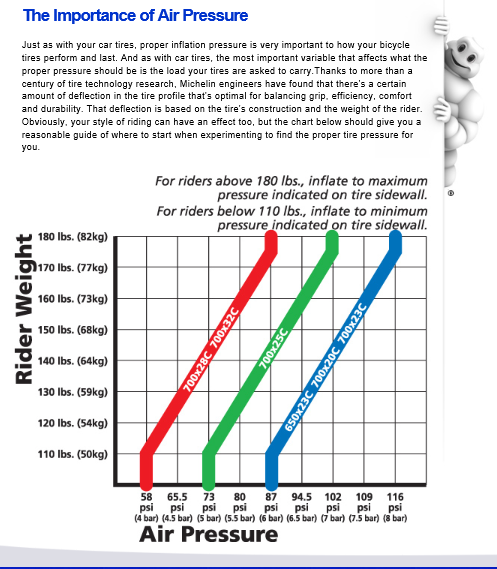
2. Automatic tire pressure monitoring systems. For example, premium cars are equipped with direct pressure sensors that are installed directly into the wheel rim. Sensors measure tire pressure and temperature, and the information is sent to the on-board computer. When pressure indicators change, a warning signal is received, or information is displayed on the computer panel in digital and alphabetic form. Similar direct control devices can be purchased and installed separately: pressure control sensors are installed in the wheels, and the receiving device is installed in the passenger compartment. nine0005
A similar system is part of the anti-lock braking system (ABS), but it works differently. The ABS system does not measure tire pressure, but wheel speed, and draws conclusions. The fact is that when the pressure decreases, the diameter of the tire changes, and the wheel starts spinning faster in order to “catch up” with the rest. The system captures these changes, checks them against valid values stored in memory, and informs you of the mismatch.
3. Indicator caps are screwed onto the tire valves. These pressure sensors are transparent on top, and this part serves as an indicator: the change in color indicates the current state of the wheels. The obvious disadvantages of such a control system are that it is impossible to evaluate the change in tire pressure during movement with its help; a stop and a visual inspection are necessary. nine0005
How often should the tire pressure be checked?
Manufacturers recommend checking tire pressure once a month. But this is the minimum. Of course, under extreme operating conditions and sudden changes in temperature, it is not worth the risk and you need to check more often. And before a long journey or planned loads, checking the internal pressure in the tire is completely mandatory, even if it is extraordinary.
nine0002 Important: pressure measurement is carried out only on cold tires - that is, those that have remained without movement for at least 5 hours.
5 most important findings
1. Tire pressure affects ride comfort, vehicle handling and your own safety.
2. Under-inflated tires wear out faster, can burst at the side and heat up much faster when driving. With prolonged use of tires with reduced pressure, tires are completely deformed so that they can no longer be restored. nine0005
3. Overinflated tires lose reliable grip, and the car loses controllability. In addition, when driving on overinflated tires, the braking distance is greatly increased, and each bump becomes more noticeable.
4. Check tire pressure at least once a month, and definitely before every long trip. A pressure gauge or automatic tire pressure monitoring systems will help with this. The pressure check is carried out on "cold" tires that have not been on the move for at least 5 hours. Temperature fluctuations, frosts, long trips in the summer and overheating of tires are an extra and important reason to double-check tire pressure. nine0005
nine0005
5. Small changes in tire pressure can help you with excessive loads or off-road. But such changes should be short-term, after which the pressure must be restored to the norm recommended by the manufacturer.
Photo: Shutterstock
adv.rbc.ru
See also
Tires are the only vehicle element that is in constant contact with the road. One of the main indicators of their serviceability is pressure. It affects not only fuel efficiency, but also safety. nine0005
As a rule, car manufacturers recommend maintaining tire pressures between 2.0 and 2.8 bar. But in practice there are situations when it is necessary to deviate from this norm.
adv.rbc.ru
Tire pressure should be checked at least once a month, there are several ways to do this. We understand why it is so important to observe the optimal pressure indicator and what it affects.
In this story:
Tire pressure is the resistance with which air "presses" on the inner area of the rubber. Properly inflated tires will last longer, give you better ride quality and improve your driving safety. If the pressure in the tires is too low or they are pumped over, then the car owner runs the risk of facing a number of problems: from buying new tires to the threat of an accident. nine0005
Properly inflated tires will last longer, give you better ride quality and improve your driving safety. If the pressure in the tires is too low or they are pumped over, then the car owner runs the risk of facing a number of problems: from buying new tires to the threat of an accident. nine0005
Properly inflated tires will last longer (Photo: Global Look Press)
Under-inflated tires are tires that are below the recommended pressure. In this case, the contact patch of rubber with the road increases, which leads to increased friction or rolling resistance. A worn out outer edge of the tread can visually give out such a problem. nine0005
Increased friction with the road can cause the tire to overheat, slip and even burst. In addition, low tire pressure leads:

When tires are over-inflated, that is, above the manufacturer's recommended rate, the contact patch decreases. As a result, the main friction with the road is taken over by the central part of the tire.
Excessive tire pressure leads to excessive sensitivity to road irregularities and the risk of tire damage, even destruction. Overinflated tires also cause the following:
Tatyana Eliseeva, an auto expert, master of sports of international class in motorsport, comments
For flat tires:

For overinflated tires:
Excessive tire pressure leads to excessive sensitivity to road irregularities and the risk of tire damage (Photo: Shutterstock)
The manufacturer sets its own optimal tire pressure for each car model. This indicator depends on the mass of the car, the speed of operation, the number of passengers (partial or full boarding), as well as the load on the trunk [1]. nine0005
Information on the recommended tire pressure can be found in the vehicle owner's manual or on one of the plates/stickers in the passenger compartment. They can be:

Tire pressure is measured in several units. In Russia, they usually indicate in kg / cm 2 (or atmospheres) and bars (bar). These two indicators are almost equal, which is why they are often used as synonyms:
Foreign models often use pounds per square inch (pound per square inch), or psi:
For convenience, car manufacturers can indicate pressure in two units at once - bar and psi. Thus, the need to independently calculate according to the formulas disappears. Otherwise, you can do this in one of the online calculators or check the table of popular values. nine0005
| 2.0 bar | 2.1 bar | 2.2 bar | 2. 3 bar 3 bar | 2.4 bar | 2.5 bar | 2.6 bar | 2.7 bar | 2.8 bar |
| 29psi | 30psi | 32 psi | 33 psi | nine0401 35 psi36 psi | 38 psi | 39psi | 41 psi |
Temperature has a significant effect on tire pressure: when it drops, the pressure in the wheels decreases with it. When the temperature drops by 10 °C, the tire deflates by an average of 0.07–0.14 bar or 1 to 2 psi [2].
Temperature has a significant effect on tire pressure (Photo: Shutterstock)
Summer tires typically use manufacturer's recommended readings. But in winter, it is advised to add about 0.2 bar to these figures [3].
Experts also recommend checking and correcting tire pressure at outside temperature. In the cold season, swapping is best done not in a warm garage, but on the street. In the summer, before such a manipulation, you should make sure that some of the wheels of the car were not under the scorching sun, while others were in the shade. nine0005
Sometimes the tire pressure needs to be adjusted according to the situation. For example, when the machine is fully loaded or a trailer is towed. For such cases, automakers, as a rule, separately indicate the optimal pressure.
But there are moments that fall into the category of extreme and non-standard (especially if before that the car most often drove around the city). Automotive expert Tatyana Eliseeva analyzed the most common of them. nine0005
Leads to heating of the wheels, especially in summer, and therefore it is necessary to follow the manufacturer's recommendations before such a trip.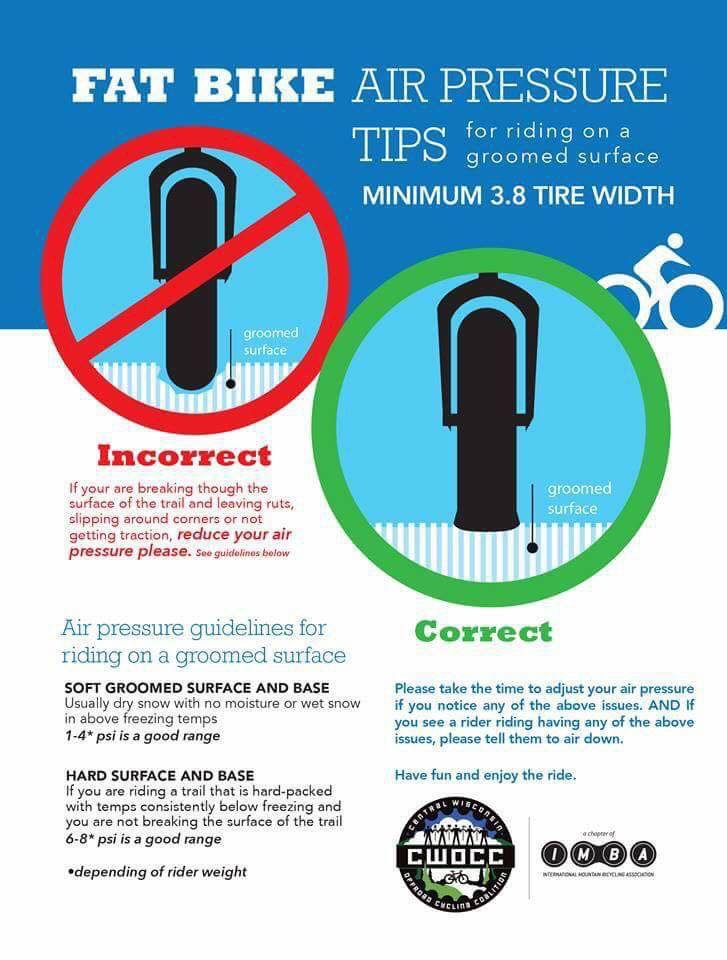 We do not know what we will meet: patched road repairs or heavy rain. After all, for each of these situations, the recommendations will be opposite. Athletes can play with pressure when track conditions are known and engineers can always change the settings. For a long journey, the layman just needs to choose the average.
We do not know what we will meet: patched road repairs or heavy rain. After all, for each of these situations, the recommendations will be opposite. Athletes can play with pressure when track conditions are known and engineers can always change the settings. For a long journey, the layman just needs to choose the average.
Tires must be bled off, especially on sand. The question is for how much? You can bleed up to 0.7 atm, but a not very experienced motorist can slip the wheels with an inaccurate movement, and if the driver turns the steering wheel sharply (for example, trying to catch on the edge of the track), then the tire can come off the disk. And such cases occur regularly.
At near-zero temperatures on packed snow, ice or sludge for new wheels (velcro or studded) it is better to pump the wheels a little so that water and sludge are squeezed out of the central zone of the contact patch and the tread is better have worked. The wheel must be cleared for the tread to work. When it is clogged with snow, the braking distance and traction deteriorate greatly. nine0005
The wheel must be cleared for the tread to work. When it is clogged with snow, the braking distance and traction deteriorate greatly. nine0005
If the car has worn wheels, but with an acceptable tread depth for winter tires (4 mm), then you should not hope for the correct operation of the tread. Such a low checker no longer pushes the snow. In this case, it is necessary to reduce the pressure in the wheel, thereby increasing the same contact patch.
Photo: Global Look Press
On a country road, the weight of the machine will be an important factor. In this case, we select the pressure according to the load - specific indicators must be viewed on the central pillar of the body. There you will see something like the following recommendation: the more the car is loaded, the higher the pressure in the rear wheels should be. nine0005
But a badly broken road can lead to herniations, ruptures and tire damage. Therefore, if we increase the pressure, then we drive on a bad road as calmly and measuredly as possible. Or we slightly deviate from the manufacturer's recommendations and raise the pressure not as much as the manufacturer recommends.
Or we slightly deviate from the manufacturer's recommendations and raise the pressure not as much as the manufacturer recommends.
The main factor in changing the behavior of the wheel is not the pressure difference at altitude, but the presence of a large number of tight turns and long braking. The tire will heat up not only from the loads, but also from the operation of the brake mechanisms. Therefore, the idea that due to low pressure it is necessary to increase the pressure in the tires is wrong, because the temperature of the wheel has a much greater influence in this case. nine0005
The recommended pressure is always given when the tires are cold. This means that the vehicle has not been driven for three hours or has traveled less than 1 mile (or one mile).
There are two ways to check tire pressure: on your own or at a workshop. In the first case, it is enough to use a public pump at a gas station or purchase a pressure gauge. This tire pressure measuring device comes in three types:
This tire pressure measuring device comes in three types:
Another option is to install special pressure control caps on each nipple. Such a gadget works as follows: the upper part of the cap is transparent and, depending on the level of pressure, an indicator of three colors appears in it. Green - the pressure is normal, yellow - the tire is flat, red - the pressure has exceeded the norm. nine0005
Photo: Shutterstock
The easiest way to monitor tire pressure is with the automatic TPMS (Tire Pressure Monitor System). Today it is installed on almost all models, and in some countries its presence is a prerequisite for releasing a car from the assembly line.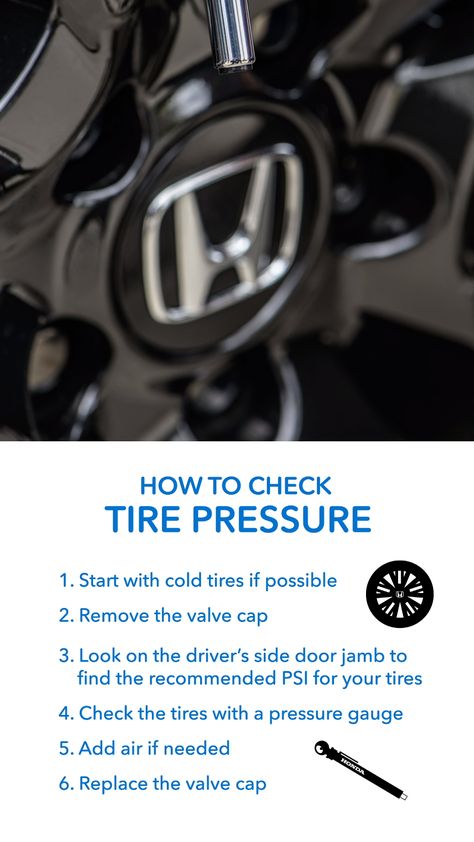
In such systems, the electronics automatically detect changes in the tire, and if the pressure drops below the recommended one, a warning signal lights up on the on-board computer screen. nine0005
There are two types of TPMS:
Car manufacturers recommend checking tire pressure every two weeks, but at least once a month. Indeed, even under ideal conditions (for example, the car is idle for a long time), the wheels lose approximately 0.069bar, or 1 psi, per month [4].
The pressure should be checked before and after a long trip, during a sudden change in temperature (for example, during the first frost or warming), and also after changing tires or driving with a load.